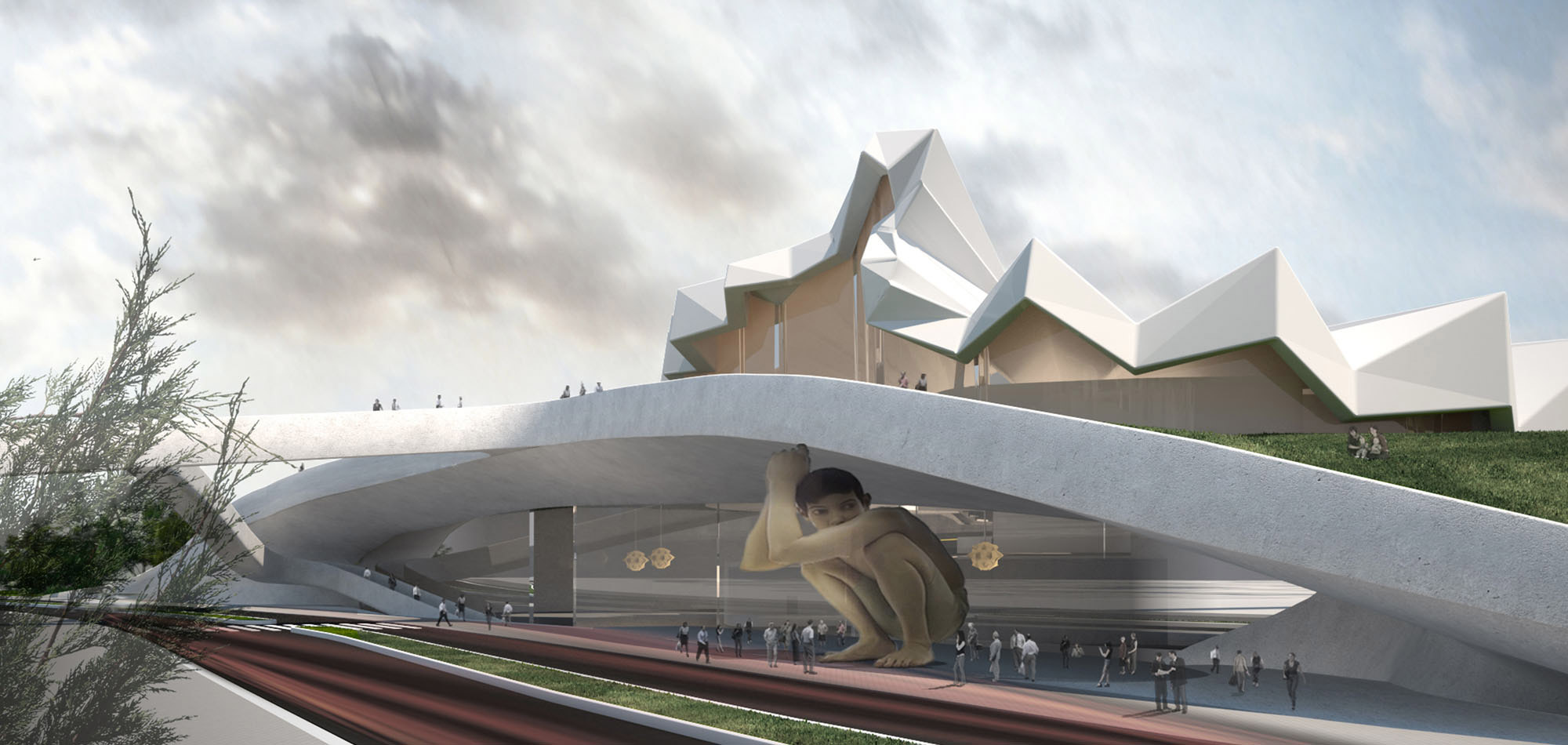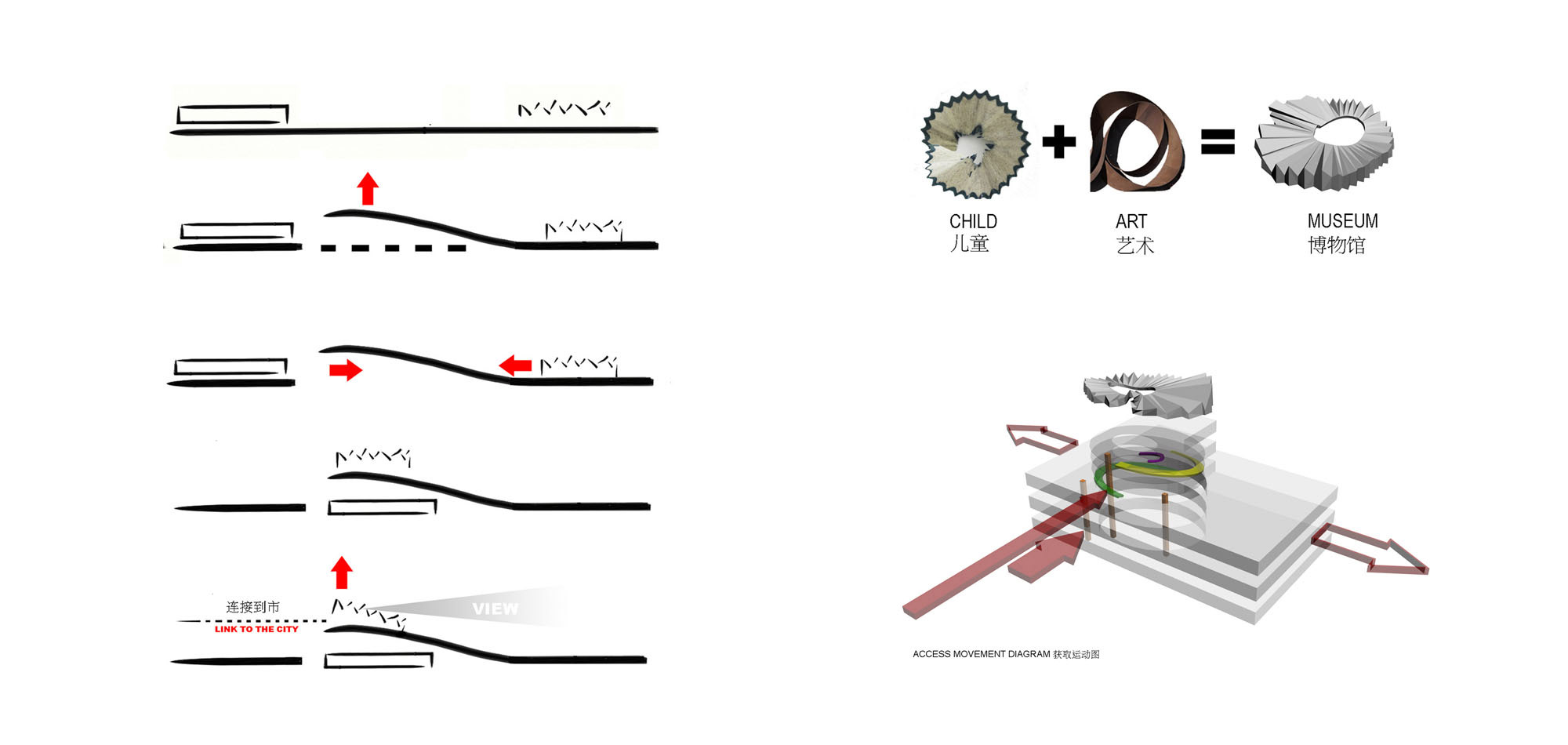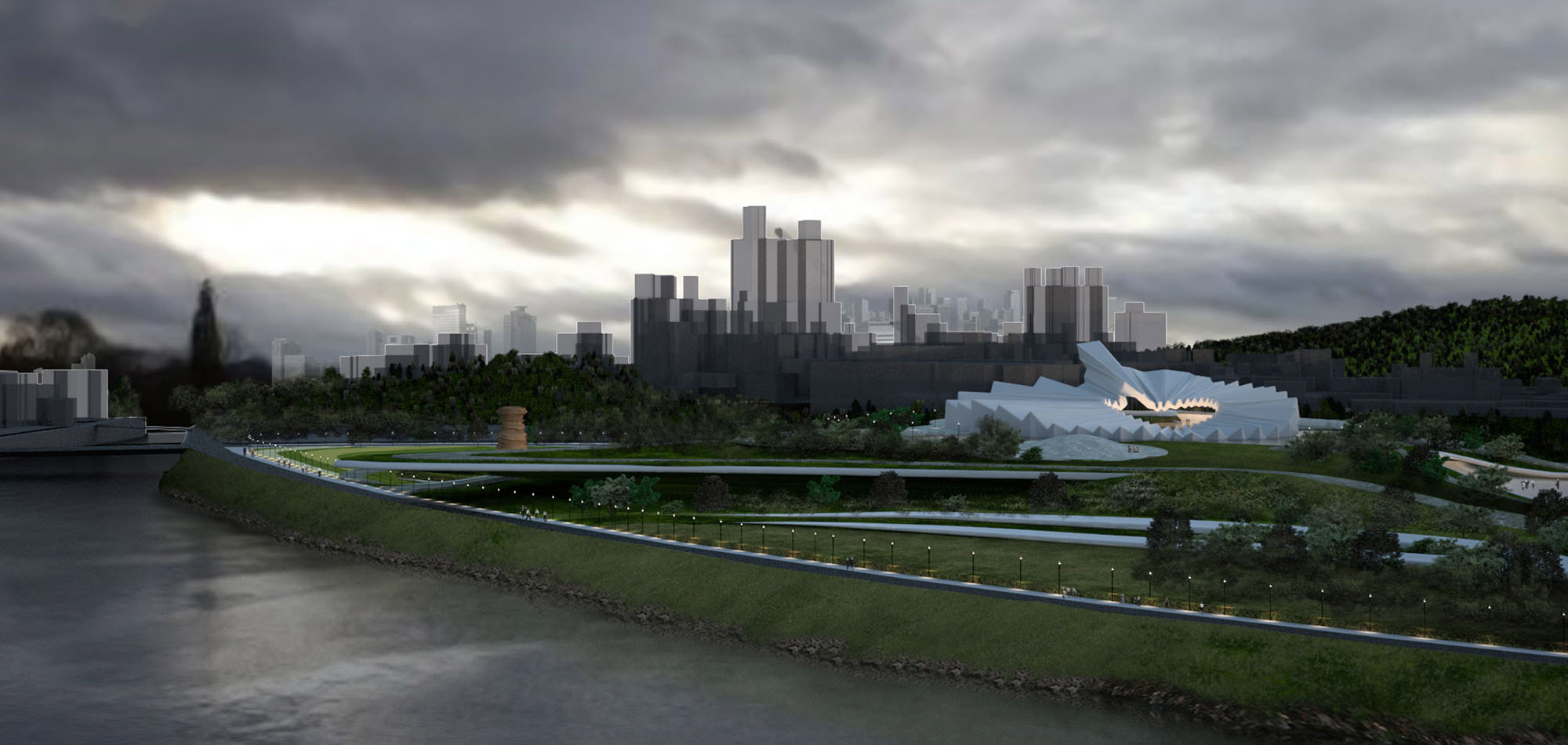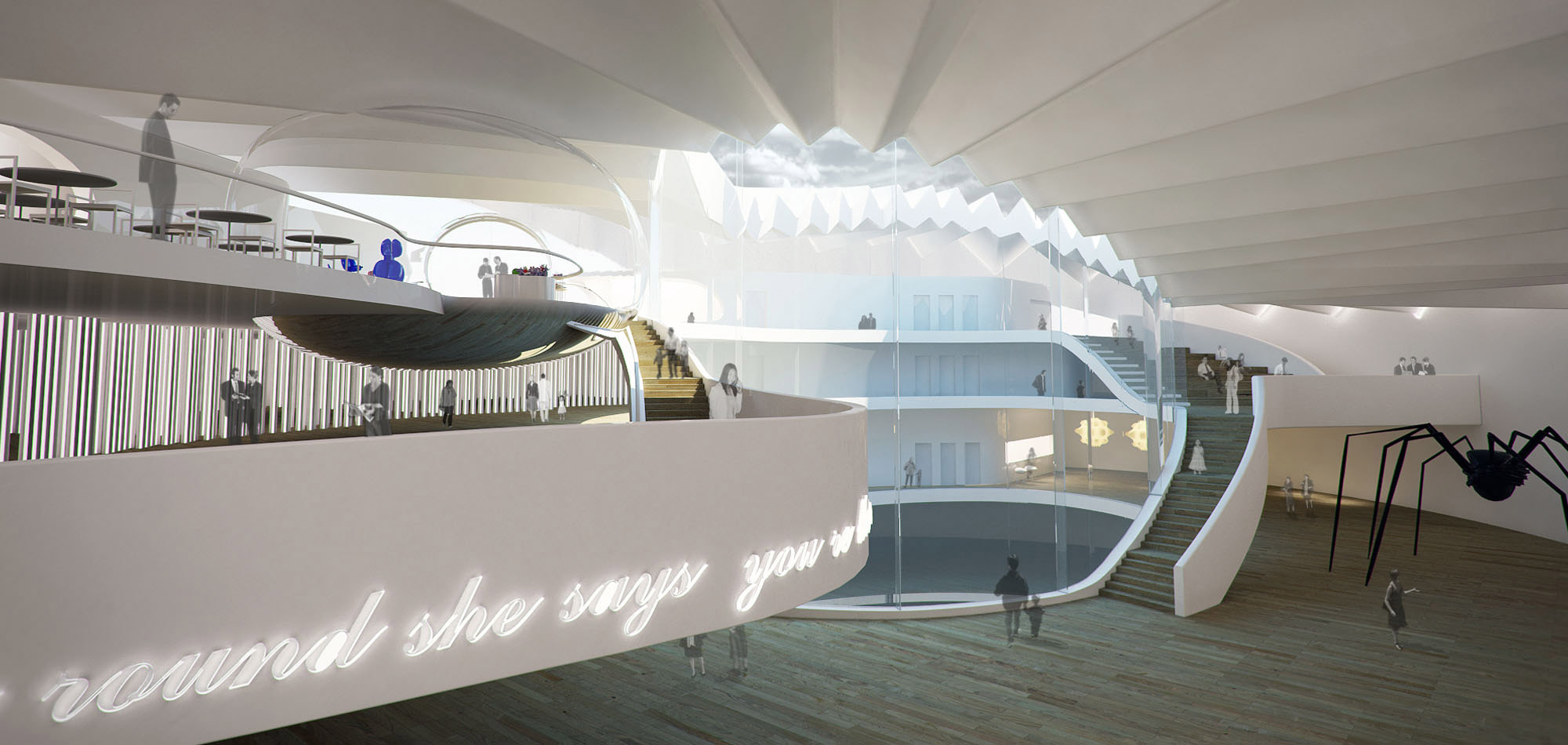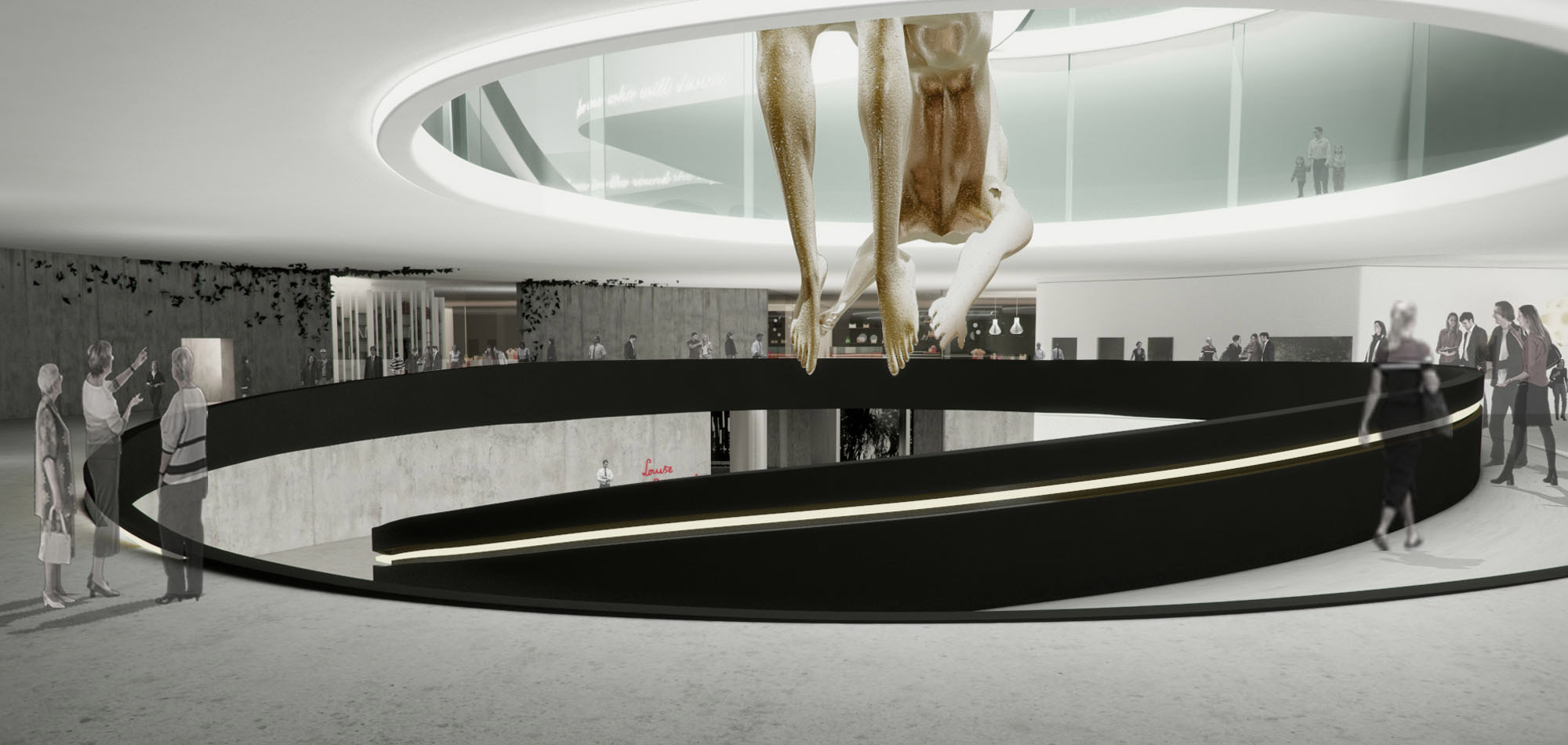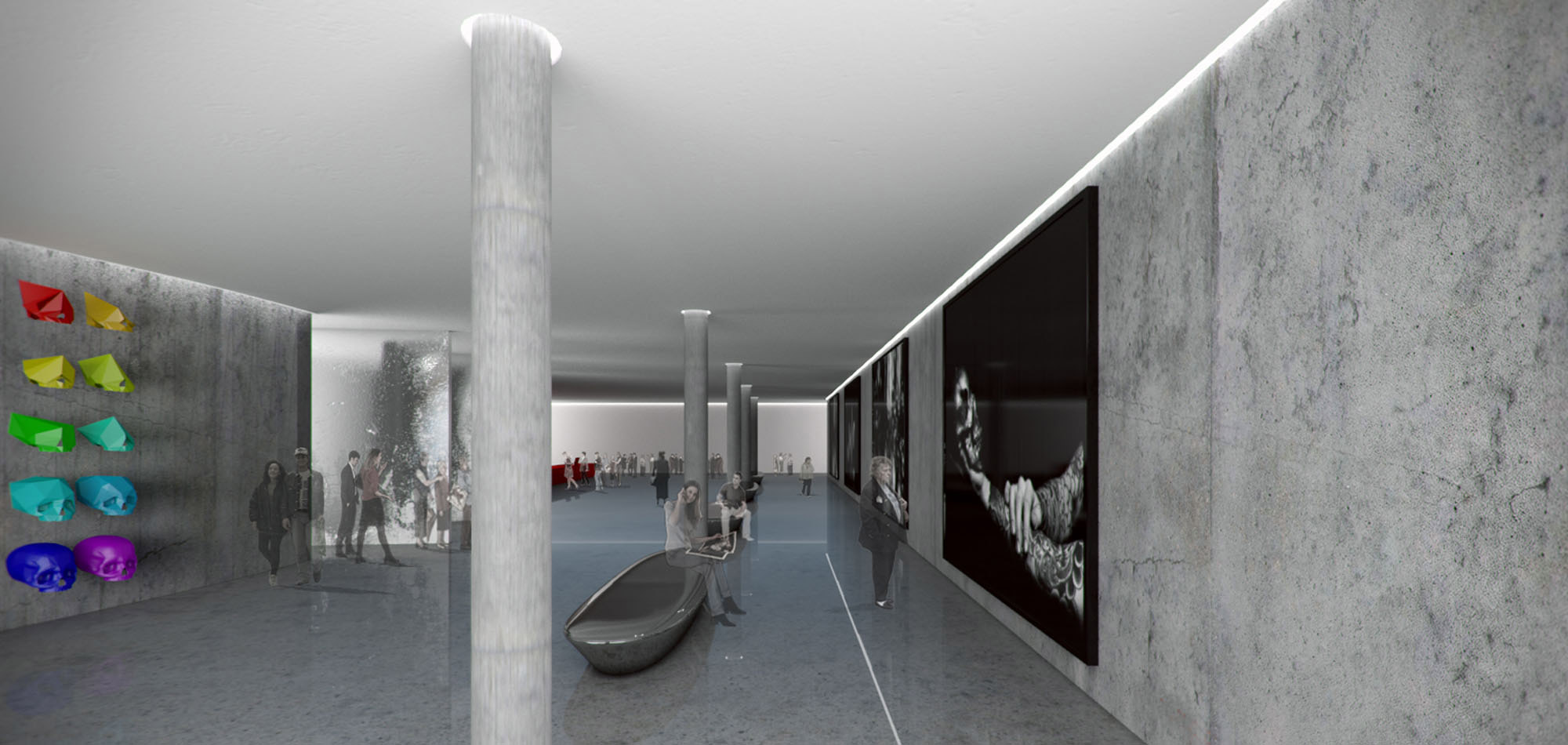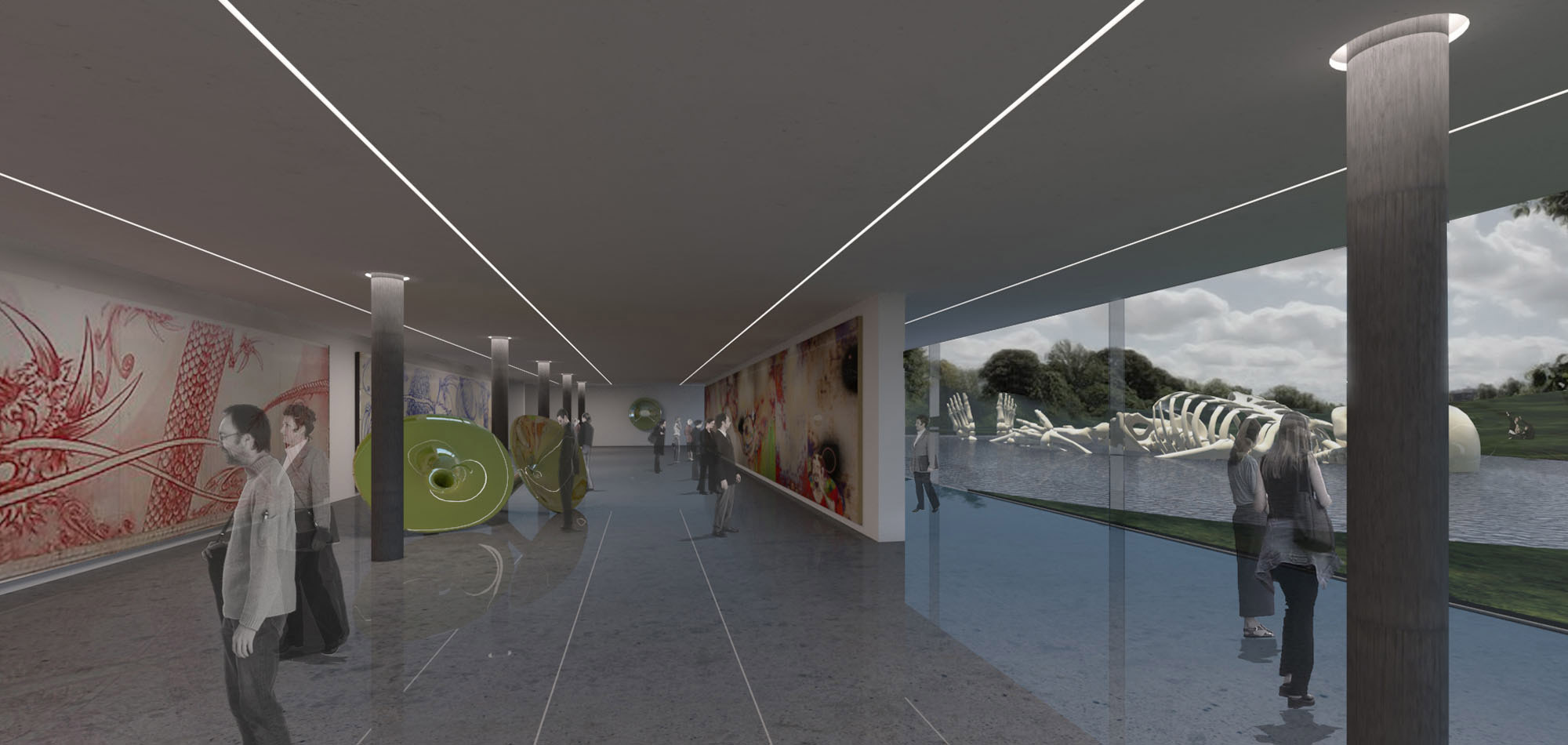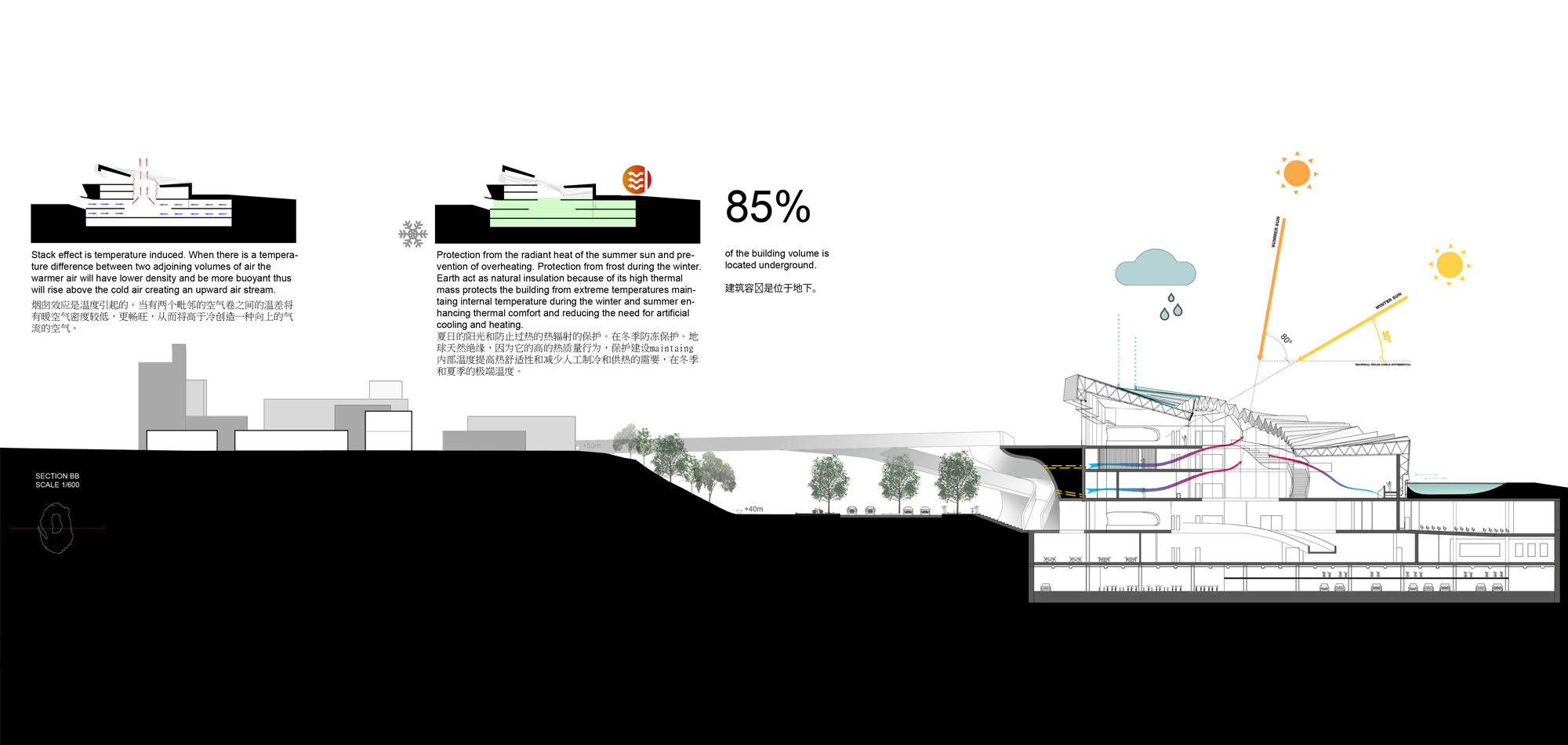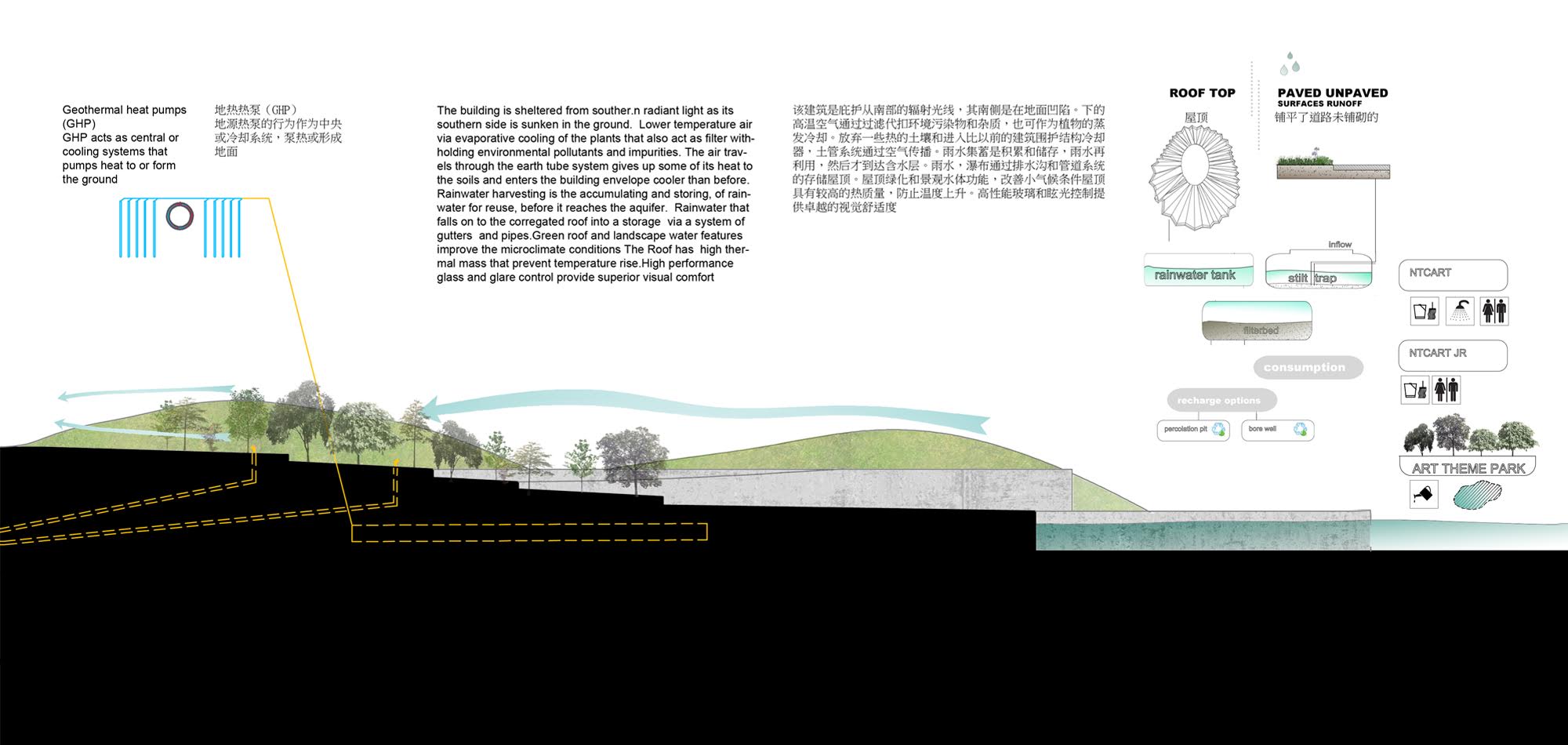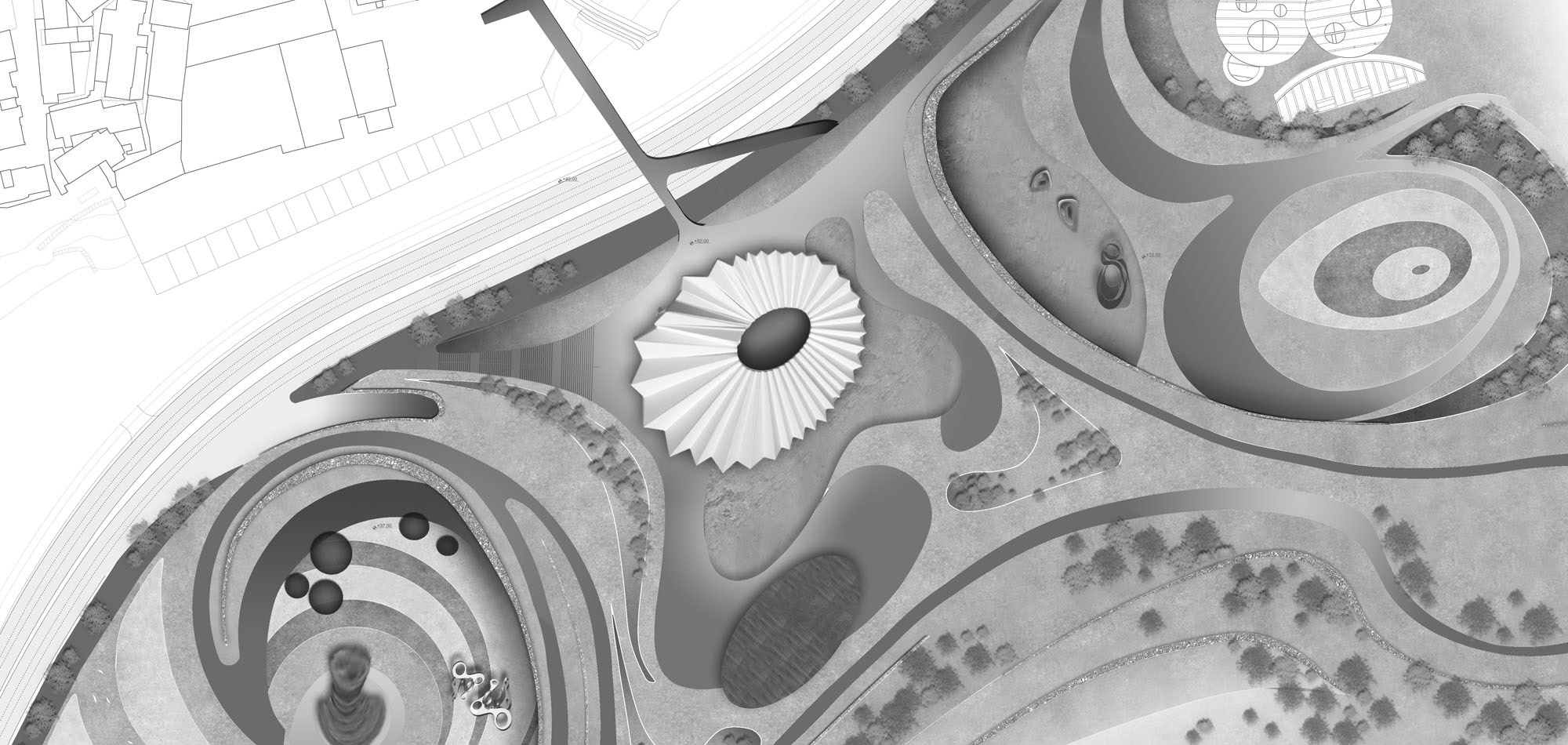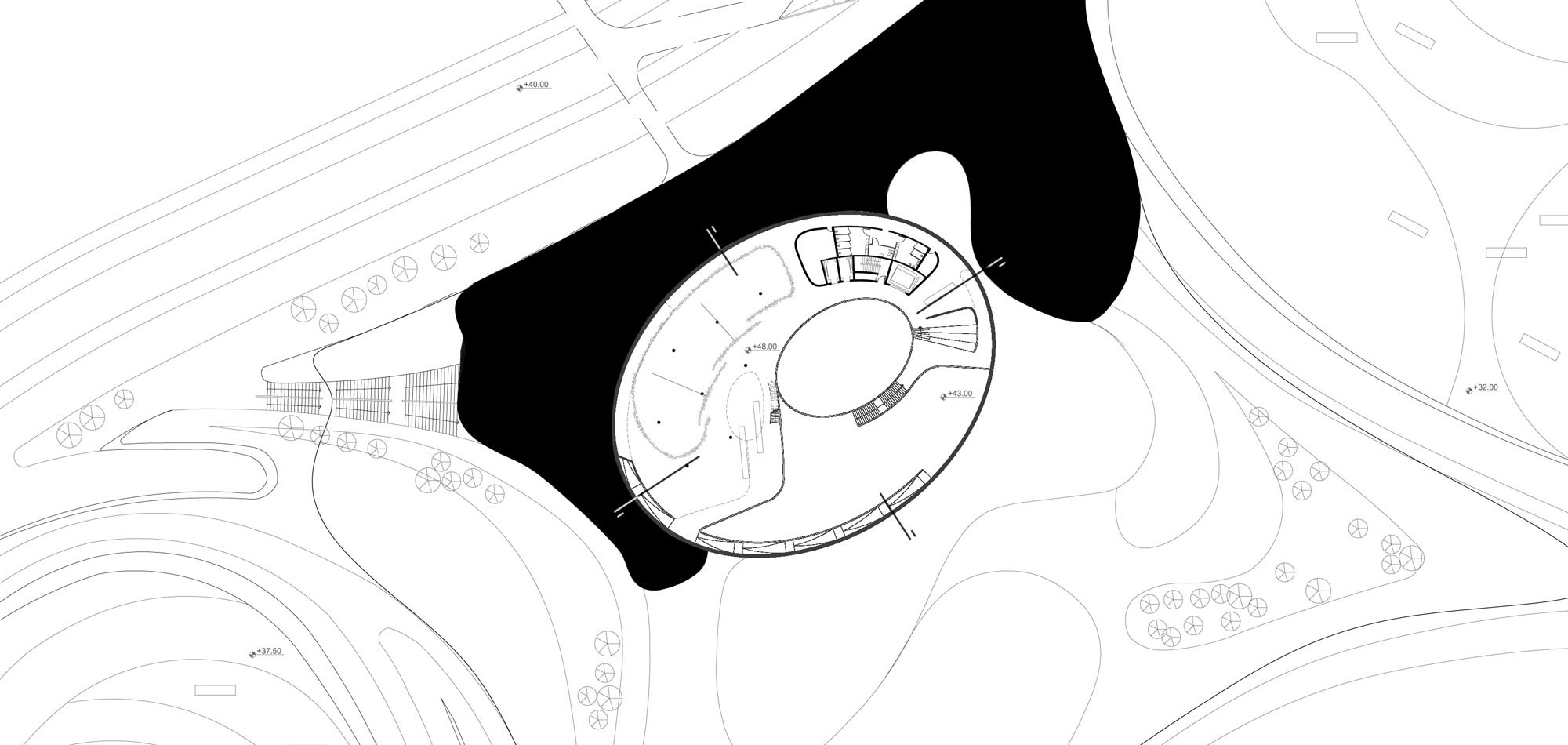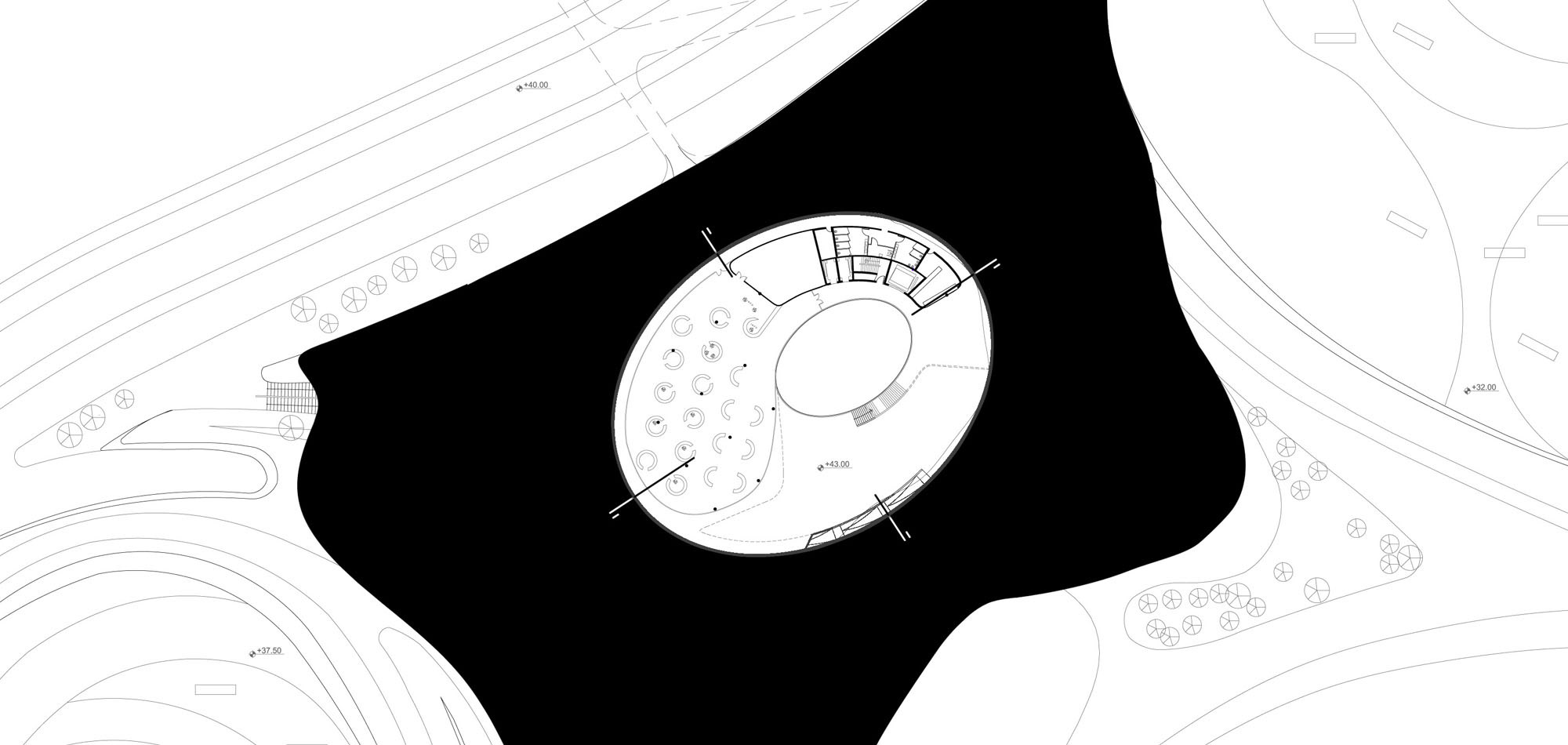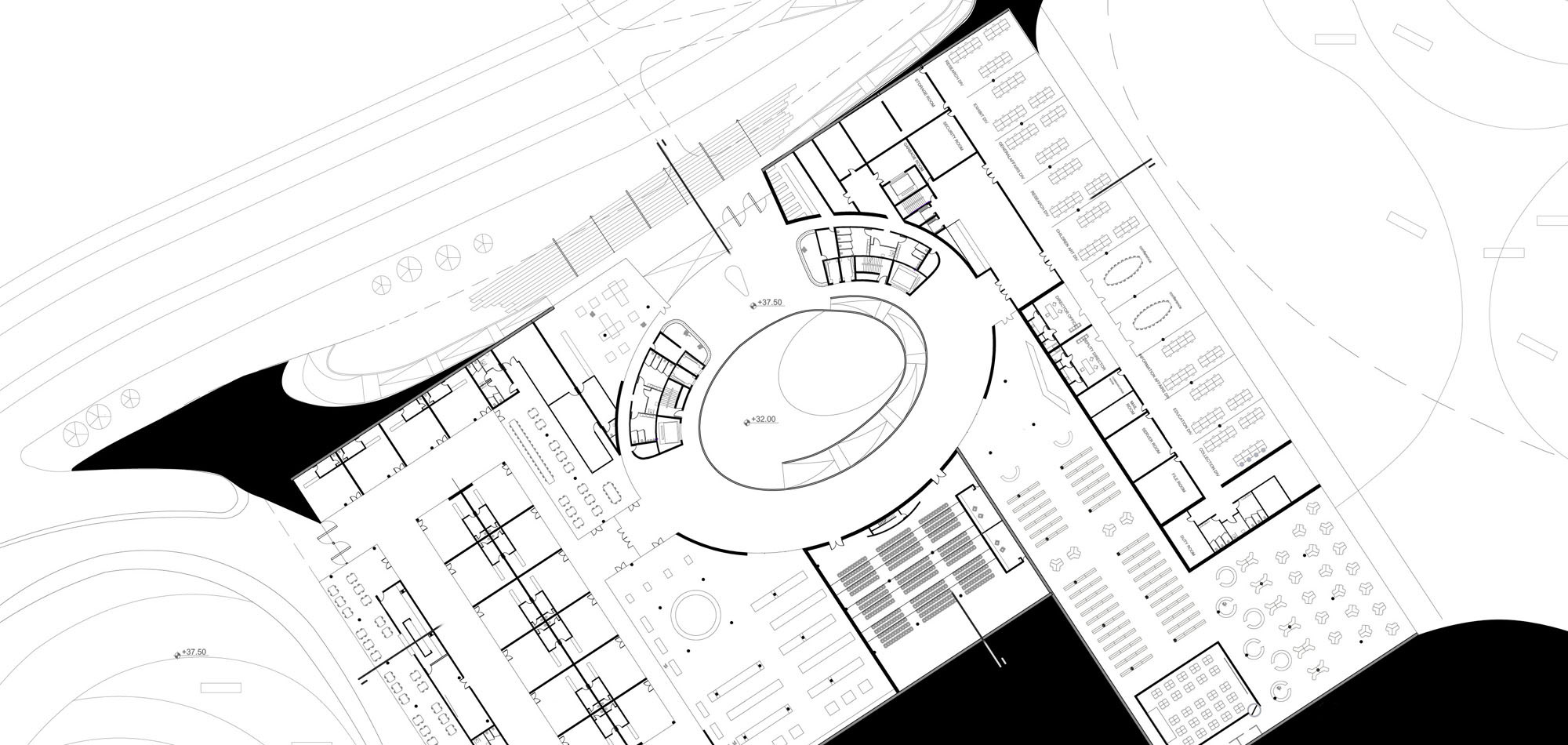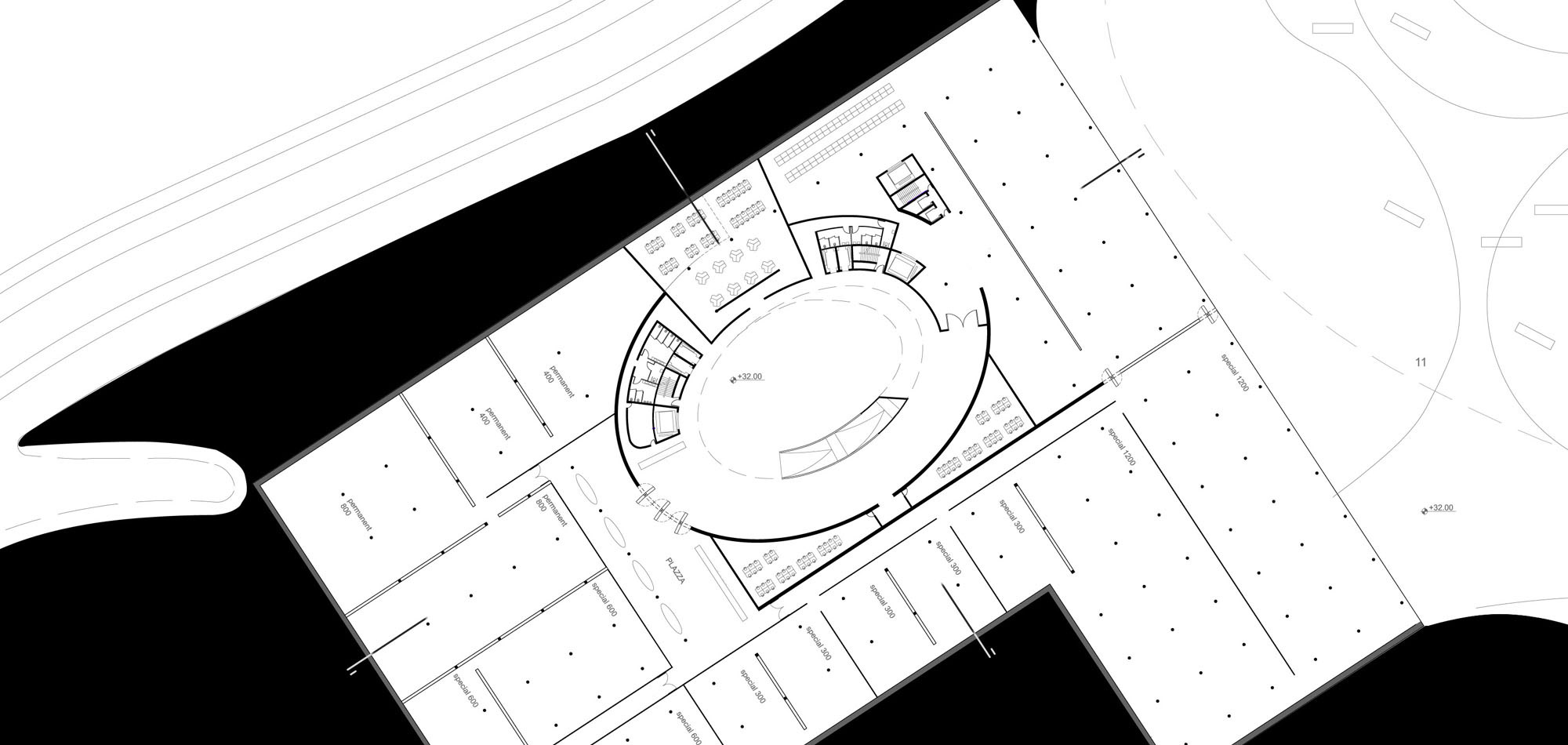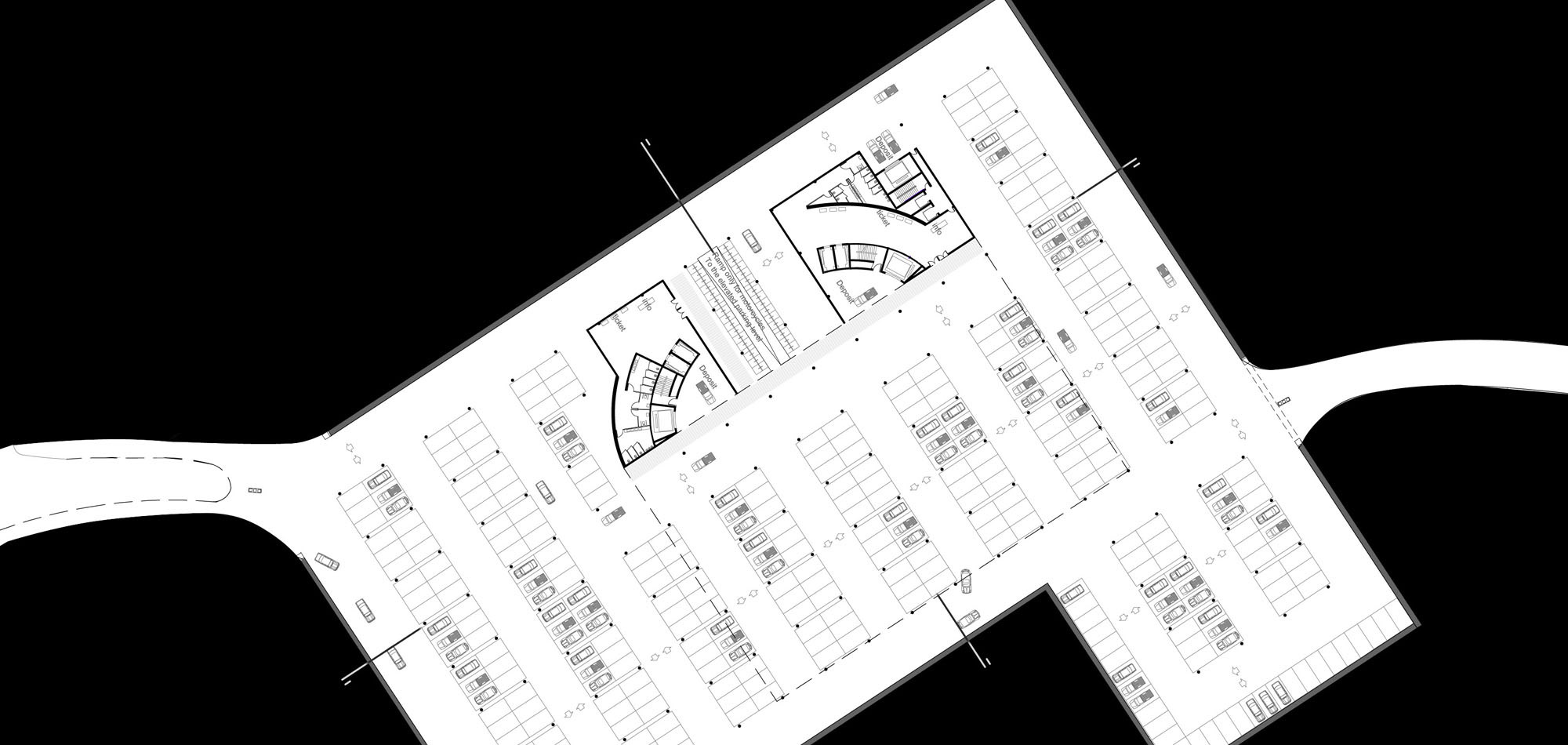When we started the design process we noticed that the site's terrain was vague, urbanistically speaking a no man’s land with remnants of industrial installations. While it had some elements of exterior design like the sculpture garden on its west boundary with the prominent sculpture feature, on its south east boundary the amphitheater and on the north east boundary the art resource center. These facilities although present within the strong boundaries of the site appear disconnected and the site gives the image of a vacant land. According to the established schedule the site was to become a part of the architecturally organized and well defined city. Our aim was to convert this area into a prominent and recognizable district within the urban landscape of Tai Pei. For that reason we decided that we wanted a building that will act as landmark within the city and could become an icon for the new image of Tai Pei.
We decided since the beginning that we did not want to merge the two programs in one but instead we wanted two separated programs consecutively two separate museums that will develop a dialectic relationship between them. We followed different patterns of organization for the two museums. The children’s art museum is organized and structured in a free fluid manner in comparison with the more rigid ortho-kanonic organization of the art museum located below it. The reason is that we felt that it was more appropriate to give its users the children the freedom of exploration and the spontaneity of discovery.
The starting conceptual model for the children museum was a pencil sharpening of a children crayon pencil. We thought of this object because it exemplifies the first artistic explorations of all of us and because of its unmistakable familiarity with our youth. We proceeded by making a shell of the sharpening from which the children museum roof was developed. This roof became the sculptural element situated within the landscape. The main art museum was envisaged as a rectangular volume a casing, a chamber with clear and recognizable circulation and orientation. We lifted the park ground and carefully placed our volume underneath. That way the much larger adult museum does not domain the landscape but it manages to become the landscape as the only visible features are the glass facades that open along the east west axis. The children museum becomes the crowning of this artificial topography elevated form the rest of the landscape. The ‘crown’ is directly connected to the urban fabric via the bridge. This elevated walkway not only connects the landscape to the city but also becomes an architectural promenade connecting the train station with the developed site. The train station in urban and physical terms is the nearest and busiest connector of Tai Pei to the rest of Taiwan thus making the new park the preferable destination. In the same axis which the bridge and museum form also lies the cable car lines that connect the park to the southern part of the city establishing it as a middle ground, the stasis between moments the resting point between destinations.
We wanted the museum to be a formal and spatial experience that announces to all who enter that this is the place for experiment, a place to leave behind assumptions and conventions. The entry level of the adult art museum was designed as a connector of the two programs. It is the level which the user can visit without the need to visit any of the exhibition spaces. It becomes a real place not only a space, a place for meetings for rest for communication and exchange of ideas and information. Because of the commercial part of the program situated here and the opening of the level to the west it becomes a sunken square bursting from activity and life.

